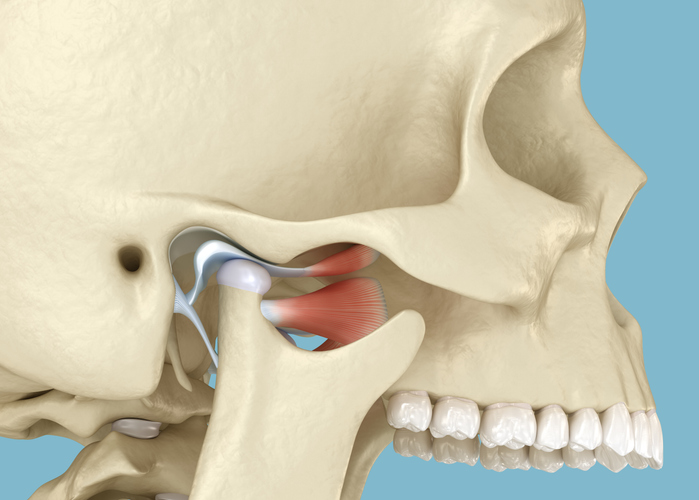Advances in TMJ Disorder Treatment: What’s New?

Temporomandibular joint (TMJ) disorders can significantly affect your daily activities and overall quality of life. Staying informed about the latest advancements in TMJ treatments is crucial for finding the best options for relief and recovery. Today, we will explore new and effective treatments for TMJ disorders, helping you find the best options for relief and recovery.
Understanding TMJ Disorders
Definition and Symptoms of TMJ Disorders
TMJ disorders affect the temporomandibular joint, connecting your jawbone to your skull. This joint is responsible for movements like chewing, speaking, and yawning. When the TMJ malfunctions, symptoms such as jaw pain, difficulty chewing, clicking or popping sounds, and headaches may occur.
Common Causes and Risk Factors
Several factors contribute to TMJ disorders, including:
- Arthritis: Inflammation of the joint
- Jaw Injury: Trauma to the jaw
- Bruxism: Teeth grinding or clenching
- Stress: Leading to muscle tension in the jaw
- Misalignment: Improper alignment of teeth or the jaw
Impact on Daily Life and Overall Health
TMJ disorders can make eating, speaking, and yawning painful, decreasing productivity and quality of life. Untreated TMJ disorders may also lead to poor nutrition due to difficulty eating and chronic headaches.
Traditional TMJ Treatments
Overview of Conventional Treatments
Historically, TMJ disorders have been managed with:
- Pain Medication: Over-the-counter pain relievers and anti-inflammatory drugs
- Physical Therapy: Exercises and manual therapy to improve jaw mobility
- Dental Splints: Mouthguards or splints to alleviate pressure on the TMJ
Limitations and Challenges of Traditional Methods
While effective for some, traditional treatments often have limitations. Pain medication offers temporary relief with potential side effects. Physical therapy requires consistent effort and may not suffice for severe cases. Dental splints can be uncomfortable and may not address underlying issues.
Transition to Newer, Innovative Treatments
With a better understanding of TMJ disorders, newer treatments aim to address root causes and provide longer-lasting relief with fewer side effects.
Minimally Invasive Procedures
Botox Injections for TMJ Pain Relief
Botox injections, known for cosmetic applications, have emerged as effective TMJ pain treatments. Injecting Botox into jaw muscles reduces muscle tension and alleviates pain. This minimally invasive procedure offers quick relief with minimal downtime.
Arthrocentesis: Flushing Out the Joint
Arthrocentesis, a minimally invasive procedure, flushes out the TMJ with a sterile solution, reducing inflammation and removing debris. It provides significant pain relief with a low risk of complications.
Advantages of Minimally Invasive Treatments
These treatments involve less downtime, reduced risk of complications, and quicker recovery. They effectively address TMJ disorders’ underlying causes, providing long-term relief and improving quality of life.
Advanced Therapies and Technologies
MRI and CT Imaging for Precise Diagnosis
Advanced imaging techniques like MRI and CT scans have revolutionized TMJ disorder diagnosis and treatment. They provide detailed views of the TMJ, allowing accurate diagnosis and personalized treatment plans.
Regenerative Medicine: Platelet-Rich Plasma (PRP) and Stem Cell Therapy
Regenerative medicine holds great promise for TMJ disorder treatment. PRP therapy involves injecting concentrated platelets into the TMJ to promote healing and reduce inflammation. Stem cell therapy uses your body’s stem cells to repair damaged TMJ tissues. These treatments offer long-lasting relief and improved joint function.
Platelet-Rich Fibrin (PRF) Therapy
Platelet-rich fibrin (PRF) is a second-generation regenerative therapy that uses your body’s natural healing properties. PRF is derived from your blood, forming a fibrin matrix rich in platelets and growth factors. This matrix is then injected into the TMJ to enhance healing, reduce inflammation, and improve joint function. PRF therapy offers a more sustained release of growth factors compared to PRP, potentially leading to more effective and longer-lasting results.
Holistic and Complementary Approaches
Acupuncture and Its Benefits for TMJ Disorders
Acupuncture, an ancient Chinese medicine practice, has gained popularity as a complementary treatment for TMJ disorders. By inserting thin needles into specific points on the body, acupuncture can reduce pain and improve TMJ function.
Nutritional Counseling and Anti-Inflammatory Diets
Diet and nutrition are crucial in managing TMJ disorders. Nutritional counseling helps identify foods that may trigger inflammation and exacerbate TMJ symptoms. An anti-inflammatory diet rich in fruits, vegetables, and omega-3 fatty acids reduces inflammation and supports joint health.
Stress Management Techniques: Mindfulness, Yoga, and Biofeedback
Stress significantly contributes to TMJ disorders. Incorporating stress management techniques into your daily routine can alleviate TMJ symptoms. Mindfulness practices, yoga, and biofeedback reduce stress and tension in the jaw muscles, promoting relaxation and improving TMJ function.
Looking Forward: The Future of TMJ Disorder Treatment
Advancements in TMJ disorder treatment offer new hope for those suffering from jaw pain and discomfort. From minimally invasive procedures to advanced therapies and holistic approaches, there are numerous options to explore. Consulting with a TMJ expert like Dr. Kevin F. Postol can help you determine the best treatment plan for your specific needs. Schedule a consultation with our team at Gateway Center for Sleep Apnea & TMJ Therapy to discuss your symptoms and discover the latest advancements in TMJ disorder treatment. We are here to help you find relief and improve your quality of life.
